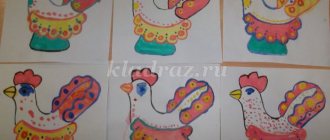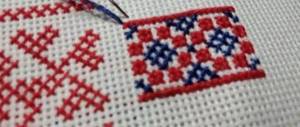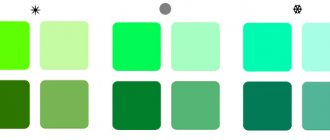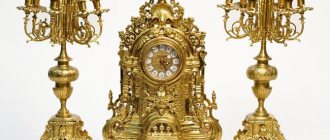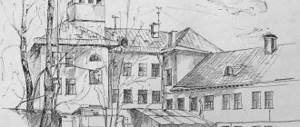Silhouette presentation for a lesson in fine arts (art, 6th grade) on the topic
Slide 1
Silhouette 6th grade 1st quarter Presentation by art teacher Golub E.B. Municipal budgetary educational institution "Secondary school No. 225" Zarechny, Penza region
Slide 2
All objects against the light have the shape of a silhouette
Slide 3
Silhouette is an image of an object that imitates the shadow it produces on a flat surface in sunlight or fiery lighting, i.e., one in which only the outline of the object is indicated, and the object itself appears as a monotonous black spot.
Slide 4
A silhouette is a flat image, a type of graphics.
Slide 5
The birthplace of silhouette art is China, where monochromatic black images, the so-called Chinese shadows, have existed for a long time. From there they penetrated into Western Europe, primarily France, where in the mid-18th century the fashion for silhouette portraits became widespread.
Slide 6
The term "silhouette" comes from the name of Etienne Silouette (1709-1767), who was minister of state in 1759. Silouette was known for his frugality and narrow-mindedness, which made him a target for the jokes of Parisian society. Everything cheap and trivial began to be named after him, including portraits painted in black paint or made of black paper, “portraits a la Silhouette.”
Slide 7
The passion for silhouettes was also reflected in applied art: snuff boxes with silhouettes, porcelain cups, embroidery, inlays, etc. appeared.
Slide 8
Compared to real picturesque portraits, silhouettes seemed boring and meager to many. However, this art found its masters and admirers, and not only in France, but also in other countries. In Germany, for example, at the beginning of the 19th century, Duttenhofer (who depicted a number of German writers and artists), K. Schmidt, Mühlbach and others were famous for their silhouettes
Slide 9
In Russia, our interest in silhouette arose in the era of Catherine II, when the Parisian silhouette artist Sido appeared in St. Petersburg. Sido painted portraits of Catherine II, members of her family and many representatives of the St. Petersburg nobility. He drew his silhouettes in ink, sometimes engraved them on copper, but most often cut them out of black paper and pasted them into engraved frames. A whole collection of these silhouettes, consisting of 183 sheets, belonged to the Duke of Mecklenburg-Strelitz and was published in phototype photographs in 1899 (“The Court of Empress Catherine II, her employees and associates”).
Slide 10
At approximately the same time as Sido, the German draftsman Anting (1753-1803) worked in St. Petersburg and released the album “Collection de cent silhouettes” in 1791. In the middle of the 19th century, interest in silhouette art almost disappeared and cutting out silhouettes turned into the profession of itinerant artists, who earned a meager piece of bread through this activity at public festivities and fairs. People in the secular circle have lost interest in this art.
Slide 11
The gradually forgotten drawing of silhouettes was revived at the end of the last century by the talented German artist A. Konevka, who painted not only profile portraits in the form of silhouettes, but also figures in different poses and genre scenes. In Russia, the art of silhouette was practiced by the painter of scenes of children's and folk life, Elizaveta Bem. But great skill is revealed by the numerous silhouettes of E.S. Kruglikova, cutting them out of paper.
Slide 12
In 1917, the Moscow artist N.Ya. successfully performed as a silhouette painter. Simonovich-Efimova, who had previously worked (like Kruglikova) in the field of engraving. Simonovich also has large portrait canvases, in which the sharp, strong characterization of the figures is remarkable.
Slide 13
"World of Art", which marked the beginning of the renewal of Russian graphics, revived the art of silhouette. The incomparable “restorers” of antiquity - K. Somov, Alexander Benois and M. Dobuzhinsky - resurrected the former spirit of the silhouette. We often see silhouettes in the works of Georgy Ivanovich Narbut.
Slide 14
Portraits using the silhouette technique are usually cut out in profile from plain paper. Typically, silhouettes (profiles) are cut out on black paper and then glued onto a white sheet. But other color variations are possible.
Slide 15
In the silhouette technique you can find a portrait, a figure, a genre sketch, a battle scene, a landscape, an architectural motif, a decorative composition, and an illustration. My favorite genre of silhouette at all times is portrait.
Slide 16
Silhouette art is full of unique charm and innumerable possibilities. This is eloquently evidenced by the works of contemporary artists who pay attention to the silhouette.
Slide 17
Silhouette art is based on the contrast of two colors - the black spot of the cut-out silhouette and the white field of the background. In itself, the combination of white and black carries a great charge of decorativeness, expressiveness, even grandeur.
Slide 20
Sources of information: www.silverage.ru/stat/siluet.htm https://dic.academic.ru/dic.nsf/brokgauz_efron/93772/ Silhouette https:// mode-elegance.ru/ poshiv /silhouette/ 100art.ru /usluga6_17.htm https:// mages.yandex.ru/ yandsearch https://pozitiv-news.ru/krasota-prirodnyh-javlenij/silujet-ljudej-na-zakate.html https://ru.wikipedia.org/ wiki/ Narbut,_Georgy_Ivanovich https://www.nasledie-rus.ru/podshivka/7305.phphttps://www.liveinternet.ru/journalshowcomments.php?jpostid=135640095&journalid=2281209&go=next&categ=0
Summary of a lesson in fine arts on the topic: “Silhouette” (6th grade)
Lesson summary
in fine arts
in 6th grade.
Lesson topic
: “Silhouette” (expressive means of graphics)
Target
: introduce students to an expressive means of graphics - silhouette.
Tasks:
1. develop creative imagination;
2. develop skills in conveying mood in a drawing.
Equipment
:
For the teacher:
line-spot portrait, silhouettes by N. Ilyina “Pushkin and Nanny”, G. Narbut. And Krylov. Illustration for the title spread, black butterfly, white butterfly, colored butterfly, flock of butterflies,
silhouette illustrations from Krylov’s fable: “The Crow and the Fox,” “The Pig under the Oak,” “The Fox and the Grapes.”
For students:
album sheet, rectangle of black paper, pencil, scissors, glue, eraser, brush, rag.
Lesson Plan
.
- Organizational start of the lesson.
- Determining the topic of the lesson.
- Conversation about silhouette.
- Explanation of the learning task.
- Independent work of students.
- Lesson summary.
- Reflection.
Board diagram
.
During the classes
.
1. Organizational start of the lesson.
- Hello guys! Sit down. Get ready for work. We are starting the lesson.
2. Determining the topic of the lesson.
— Dear guys, Today we will look and talk about not quite ordinary works.
- Look at the board and tell me how the paintings differ from those that I hold in my hands?
— Maybe someone knows the name of the paintings in which all the images are presented in the form of black shadows?
— Such images are called silhouettes. These works are performed by graphic artists. They love black very much, because it is the main color of color and they simply cannot do without it. Everything in them is depicted as black shadows.
— Where can knowledge about the silhouette come in handy? (They will learn to draw pictures in the form of a silhouette, create a shadow theater.)
3. Conversation about the silhouette.
— Silhouette is a type of graphic image. This is a flat, monochromatic image of figures and objects.
— Silhouettes can be not only black on a white background, but also white on a black background.
— Consider the following plot of the composition.
The great poet Alexander Pushkin reads poetry to the nanny, and maybe even a fairy tale. She listens to him, sitting at the table, and knits something. The cat probably came to listen too.
— Every object, every figure is a silhouette, but not just in the form of shadows, but shadows that repeat the shape of objects and figures.
- Can you and I see and determine at what time of the day and even year the action takes place in this composition?
— Outside the window you can see white silhouettes of snow-covered trees, a month and stars on a black background. So it's winter, late evening.
“And it’s unlikely that anyone will recognize this person from his silhouette image.”
— In front of you is the silhouette of the figure of the great fabulist Ivan Krylov. Big and menacing, wearing a hat and with a cane, he walks through the park.
- What season?
— The silhouettes of intertwined, bare tree branches tell us about autumn.
— Guys, please tell me, looking at these drawings, can you name Krylov’s fables?
— Let’s see what a wonderful cover Georgy Narbut made for the book of Krylov’s fables.
— What is depicted on it in black silhouettes, and what in white?
- Yes, these are shadows falling from objects and figures.
- Remember. You are walking along a street illuminated by lanterns. What's happening to your shadow?
- Why do we find it so funny when we see the shadow of our figure moving away from the lantern?
- Right. The shadows lengthen and narrow.
“She has nothing in common with our figure.”
- This means that for silhouette images we need only those shadows that convey the utmost resemblance to a person or object.
Let us note one more feature of the silhouette.
— A black butterfly flew onto a white field.
— A white butterfly flew in and landed on a black field.
— The third butterfly flew in - a multi-colored one.
— How do its wings differ from the wings of silhouette butterflies, except for color?
— A colored butterfly’s wings are detailed inside—there are veins, dots, and specks. The silhouette inside is not worked out. Therefore, it is perceived as a stain.
- Here's a whole flock of butterflies.
From a distance they look like black specks.
- But these are not just blots. Each butterfly has its own wing shape.
And therefore we can distinguish silhouettes from each other.
— I wonder why the images in the form of shadows were called “Silhouette” and not otherwise?
“One of the students will tell us where this word came from.”
Historical reference:
His name was Etienne de Silhouette. He was the Marquis and Minister of Finance of France, that is, he was in charge of the money of the entire country: where and what to spend it on. Silhouette was noble and rich, but few people loved him. And then one day early in the morning a newspaper came out with his portrait. The artist depicted his head in profile in the form of a shadow.
The minister already had a long nose, but the artist decided to joke and drew it even longer. But the people who bought the newspapers still recognized him, their finance minister, and laughed merrily, pointing their fingers at the newspaper. Silhouette images began to come into fashion. It was very expensive to order a portrait from a painter, but many wanted to have their own portrait for a lower price. Such portraits were used to decorate the walls of rooms, offices, boxes, and jewelry.
Such images came to be called “silhouettes”. This was almost 200 years ago.
— Tell me, please, why do you think people’s heads are depicted in profile and not from the front?
- Because with this position of the head we have a better idea of the person’s facial features in silhouette.
4. Explanation of the learning task.
— And today we will try to imagine and create the silhouette of our favorite fairy-tale hero. These can be both animals and people.
— Please name your favorite fairy-tale characters.
Completing the task:
1. Remove the sheet from the album and set it aside.
2. On the back of the black rectangle, draw a large fairy-tale character in profile.
3. Cut it along the contour.
4. Beautifully arrange the image obtained from a black rectangle on a white sheet.
5. Stick it on. Then you get a black silhouette on a white background.
— Do you have any questions for me?
5. Independent work of students.
- Let's get to work.
While students are working:
- Physical education minute:
And now we are with you, children,
We're flying away on a rocket.
Get up on your toes,
And then hands down.
Up, down, up, down.
Here's a rocket flying up.
- Provide individual assistance.
- Ensure that the work sequence is carried out correctly.
6. Lesson summary.
(Students' work is displayed at the board)
- Let's analyze your drawings. Try doing this yourself first. When analyzing, note the most expressive silhouettes.
7. Reflection.
— Each of you has squares of three colors on your desks: red, yellow, green. How would you rate this lesson?
If you liked today's lesson, you are interested in the topic, type of activity, raise the green square.
If you were bored or uninterested during the lesson, then raise the red square.
If you are undecided on the answer or don’t care, raise the yellow square.
- Thank you. The lesson is over. Don't forget to clear out your workspaces.
